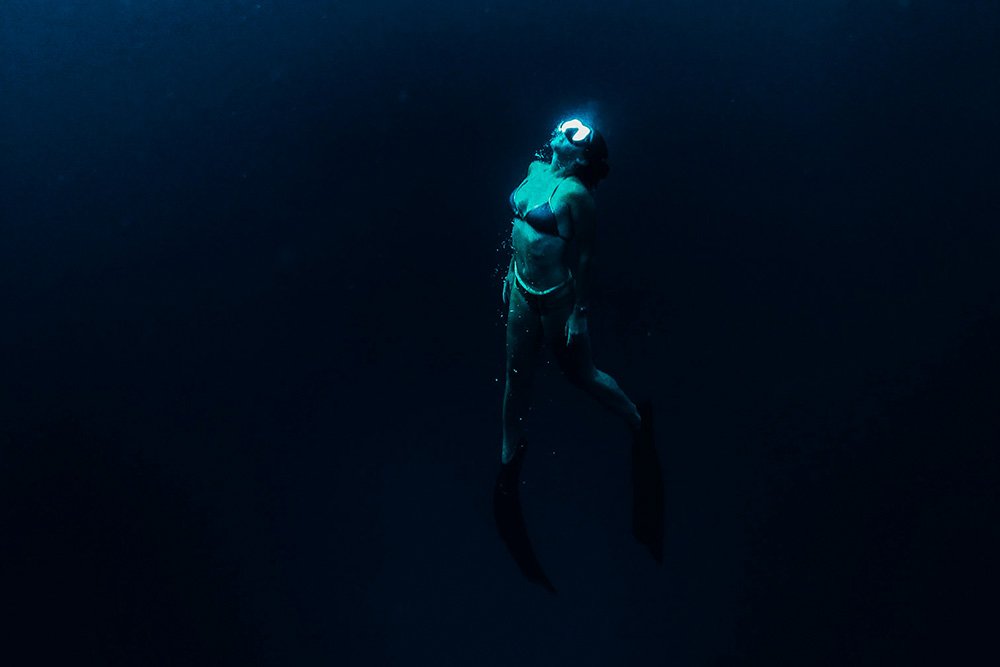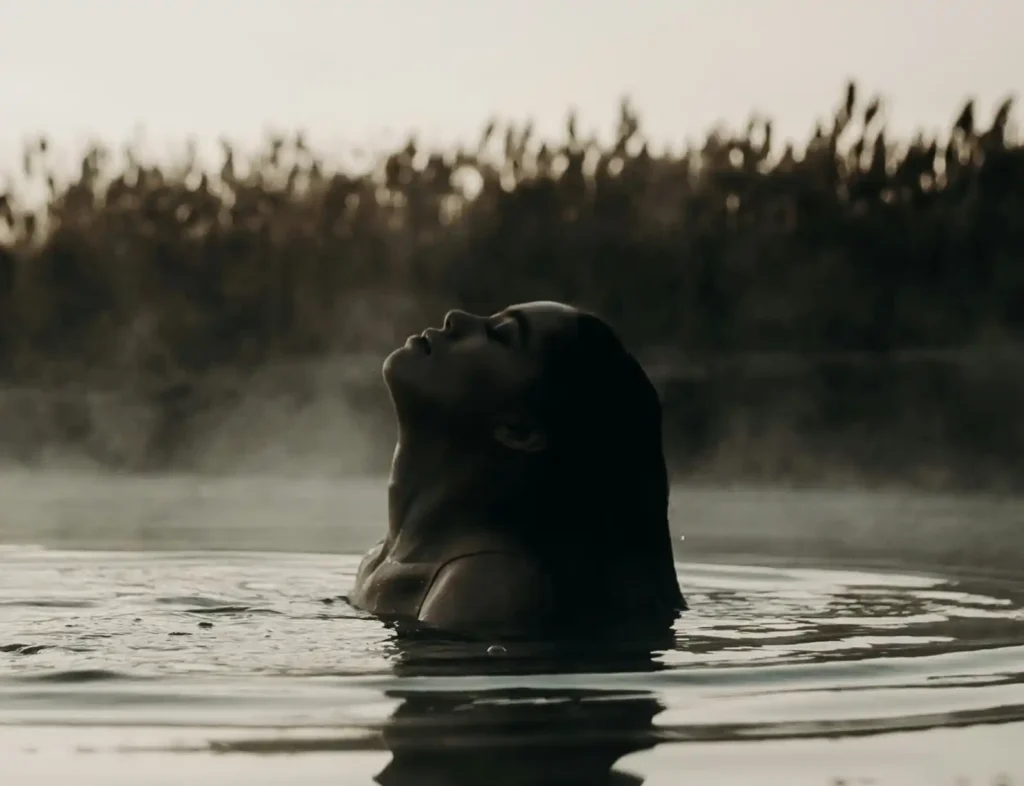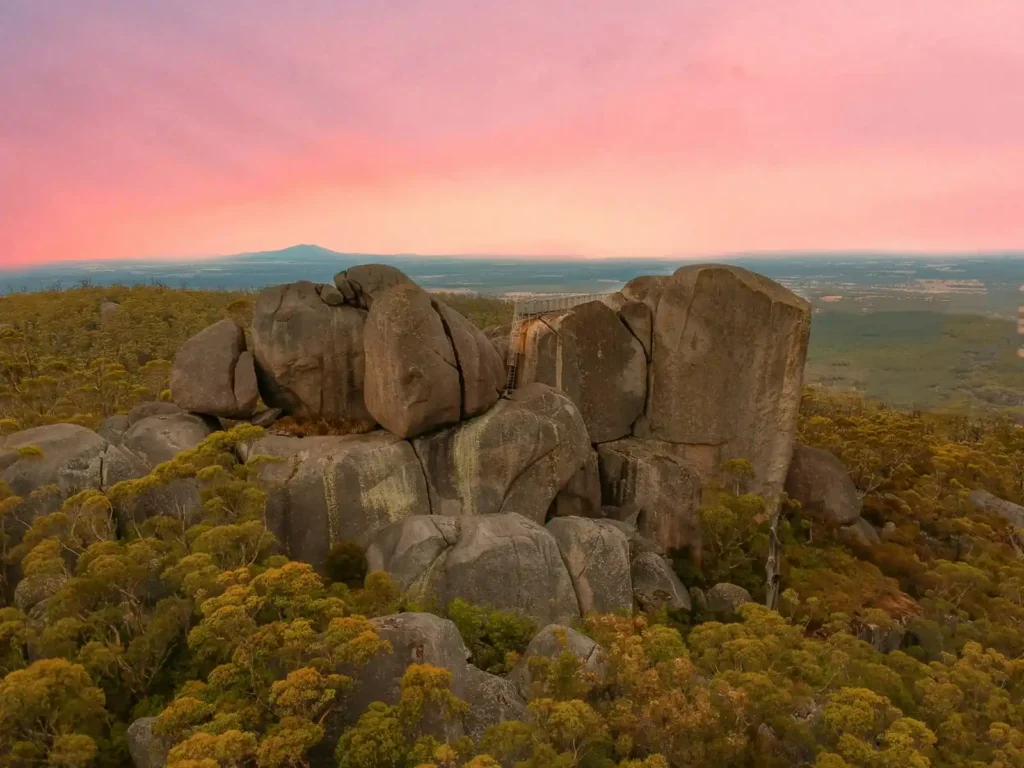I felt something ancient stirring inside when I held my breath and slipped beneath the ocean’s surface. Like I was tapping into something primal. The sound of my heart in my ears, the silence of the underwater world, the feeling as if freediving was exactly how our mammalian bodies were meant to operate.
Turns out, it wasn’t just my imagination or a poetic license—it’s biology. Known as the mammalian dive reflex, this built-in survival mechanism kicks in when our faces hit cold water, triggering a cascade of changes that help us stay underwater longer. And for freedivers, it’s not just fascinating—it’s essential.
What is the mammalian dive reflex?
The mammalian dive reflex (MDR), or dive response, is a natural response shared by all mammals—humans, whales, seals, even otters. It’s designed to conserve oxygen and protect vital organs when submerged. How unbelievable is that?
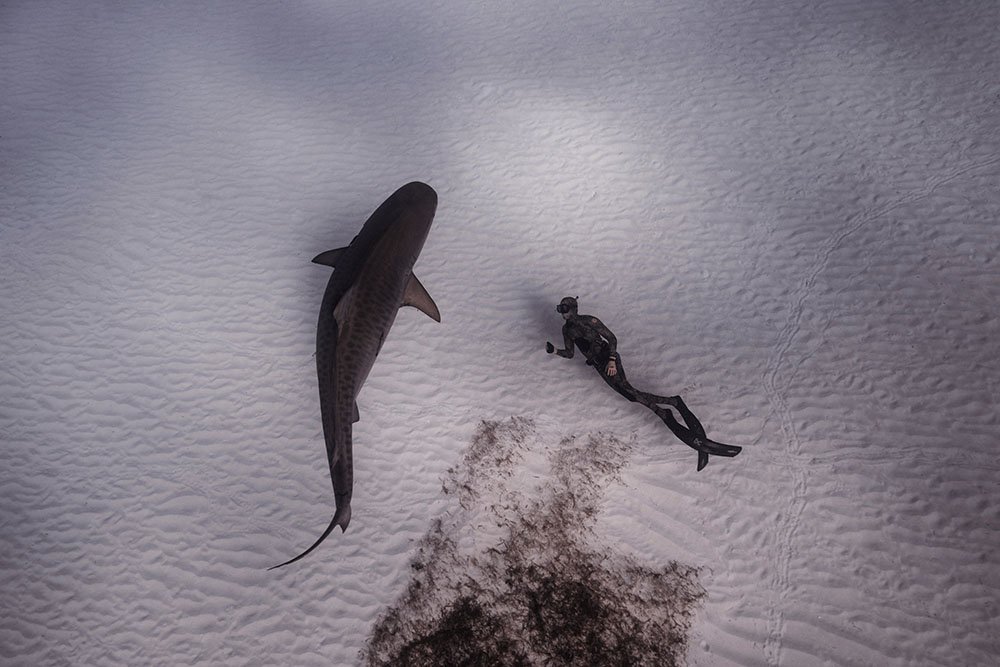
When triggered, the reflex slows your heart rate (called bradycardia), redirects blood to the brain and heart (known as peripheral vasoconstriction) and allows the lungs to compress safely under pressure (known as a blood shift).
This reflex is more pronounced in trained freedivers, given their ability to tolerate higher levels of carbon dioxide in their lungs than the average person. But even first-timers feel it—like that moment of calm that replaces the initial panic when you hold your breath long enough. It’s your body remembering something primal.
My first taste of the reflex – cray diving at Rottnest
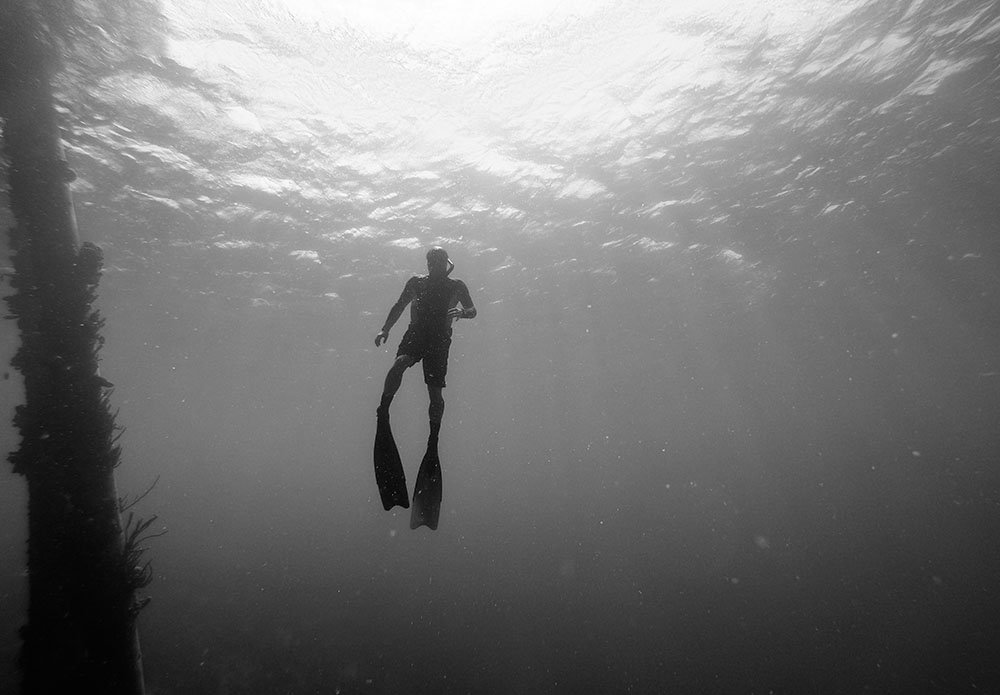
I didn’t set out to become a freediver. It started with a cray loop and a mate’s old weight belt on a sunny morning at Rottnest Island.
We paddled out near Parker Point, the seagrass beds glowing electric green beneath the glassy surface. The water was cool—just enough to sting the cheeks and send my heart rate upwards. My mate Mike told me to calm myself on the surface, holding on to the small buoy he’d brought. Breathe slowly through my snorkel, he said, while facing down into the water. It’s called a breathe-up, a way to lower the heart rate, relax the muscles and mind, and signal to the body that there’s no reason to be tense.
Then, I took a deep breath and duck-dived down toward a crack we’d spotted from the surface, kicking very subtly with my chin tilted inwards.
At first, my mind raced. Too deep. Too long. But then something shifted. My heart rate remained calm. The pressure in my chest softened. Everything slowed. I was down there with fish swimming far closer to me than I believe they would have had I been equipped with loud scuba equipment. My chest felt warm. I forgot about the potential cray cave I was meant to inspect.
When I surfaced, I gasped and sucked in several breaths as instructed by Mike, but through a grin. The loop was empty, but I’d caught something better: my first real hit of the mammalian dive reflex.
From then on, I was hooked—not just on crayfish, but on the strange, meditative state that only freediving brings.
How freedivers use the dive reflex
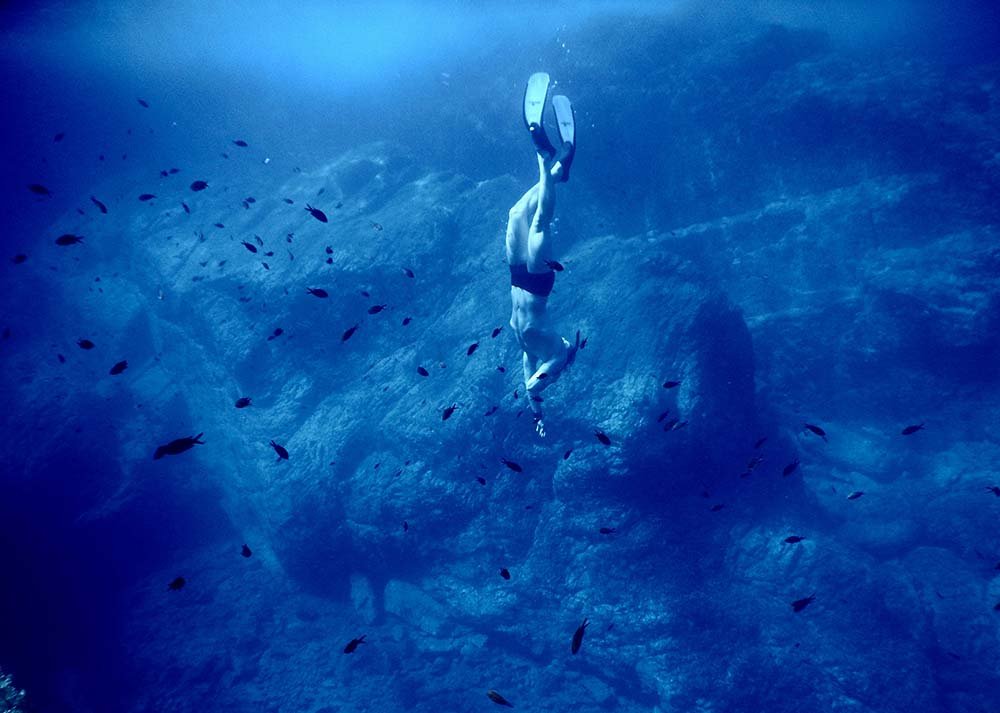
Experienced freedivers train to harness and enhance the dive reflex. The professionals can often do it at their peril but for anyone wanting to find peace underwater while activating a part of their primitive selves, here’s what you can take away from pro freedivers:
1. Breath-hold (apnea) training
Static and dynamic apnea—holding your breath at rest or while swimming—teaches your body to cope with rising carbon dioxide levels and extend the onset of the dive reflex. Over time, your reflex becomes more efficient. You can download free apps to help you train, my favourite being the Freediving Apnea Trainer.
2. Relaxation and mental focus
Since the mammalian dive reflex is tied to heart rate, freedivers practice slowing their breathing and calming the mind before a dive. Stress or excitement keeps the heart pumping and burns oxygen faster. Yogis are often using the same method to find presence and relaxation in their practice.
3. Facial immersion
Even submerging just the face in cold water can trigger the reflex. Some divers splash their faces with water before a dive to stimulate it. And it’s probably why your breathe-up, facedown in the ocean before descending into the water, is so imperative.
I’ve also found that splashing my face with cold water in the morning can do more heavy lifting than a big cup of coffee when I’m tired.
4. Progressive depth training
As divers go deeper, the body adapts. The blood shift becomes more significant, allowing the lungs to compress without damage. The reflex strengthens with experience.
I love the fact that I don’t need to be in the ocean to train to be a better freediver. Using the app I mentioned, or simply practicing safe breathholds while on lend are a great motivator when I’m underwater: we can hold our breaths underwater for far longer than we think. Thank our water-based ancestors.
The benefits of using the mammalian reflex
Western Australia’s coastline is a playground for freedivers. From the cray holes at Rottnest to the coral gardens of Ningaloo, knowing how your body behaves underwater is the difference between a rushed, gasping dive and a calm, efficient one.
Even recreational snorkellers can benefit. Learning to relax, time your dives and trust your body can transform a beach swim into a deeper, more connected experience.
Safety first
While the dive reflex is remarkable, it’s no magic trick. Freediving carries risks—blackouts, barotrauma, shallow water fainting—and should always be practiced with a buddy, never alone. This is rule number one.
Proper training through a freediving school is highly recommended if you want to go deeper or stay down longer.
Ready to hold your breath?
The mammalian dive reflex is proof that we’re still wired for the water. I was 8m underwater with lungs full of oxygen when I realised this. I’ve scuba dived for years, but it wasn’t until I was several metres deep with only my wetsuit and a weight belt that I discovered there’s been something hiding inside me all along: the mammalian dive reflex, something far lighter and easier to access than scuba tanks or high-tech gear. Keen to test it out? Just take a breath, muster a bit of courage and remind yourself you were literally built for this. Oh, and don’t forget to always go with a buddy. And even better, get some professional training before you attempt it in the deep blue.
Looking for your next adventure? Get inspired by our local explorers and read our latest adventure guides. You never know, it might just get you out the door this weekend and deep into nature’s playground.
